- Home
- Best Firewood
- Half Cord of Firewood
Half Cord Of Firewood
This post may contain affiliate links so I earn a commission.
How much wood is in a half cord of firewood and why is this important to know?
When purchasing cut firewood, you should pay close attention to the unit of measurement that is being used so you can effectively compare prices and ensure that you are getting the right quantity of wood.
This sounds like common sense, but in the world of selling firewood, the measurement terms can get confusing really fast.
Firewood is sold in cords, half cords, face cords, cord feet, and even loose thrown cords.
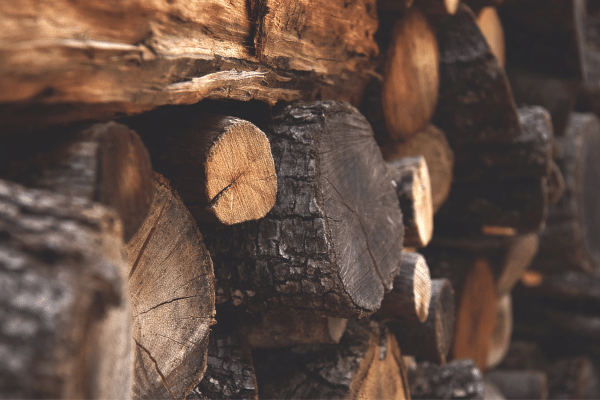
Although it is against the law to sell firewood in non-cord
or fractions of cord increments, you may still see ads for firewood sold by the
truckload, pallet, rack, or rick.
With so many terms being bantered around, it could be easy to get confused.
We are here to sort out the terminology and untangle the cords, so to speak.
Why Do We Need To Measure Firewood?
Since I typically cut my own wood, an accurate form of measurement for my firewood isn't really that important.
It is, however, a good way for me to know how much wood I burn each year and how much I can expect to burn in future years.
I tend to use my own, informal way of determining how much wood I have, like filling up a certain amount of space inside our firewood shed or how many "rows" I have stacked between trees.
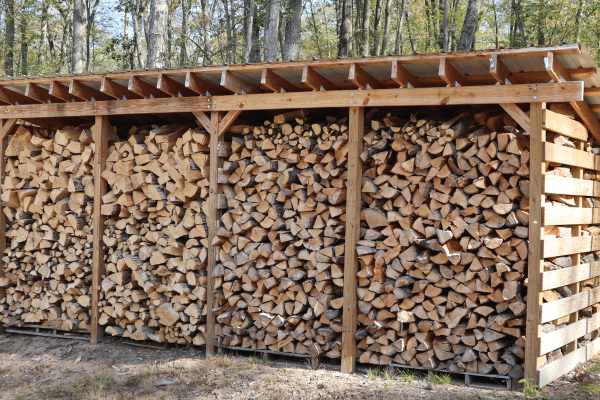
It means nothing to people outside my family and it is an inexact form of
measurement with lots of variables.
Such is the case with other firewood measurements.
The need to reduce these variables led to the standardization of firewood measurements, with the main unit of measurement being a cord.
Using Cord As The Official Firewood Measurement
We know that the United States has been quite stubborn about adopting the metric system for measurements.
We cling to strange, archaic forms of measurement, like fathoms, hands, knots, drams, and feet.
Cords are another example of this.
A cord is a throwback from as far back as the early 1600s.
Bundles of firewood were sold tied together with thick cords.
Wood buyers of the past would bring their own pre-measured piece of string, or cord, to wrap around the wood stack to make sure they weren’t being gypped.
What Is A Cord Of Wood?
A cord of firewood is enough firewood, tightly stacked together, to occupy a space of 128 cubic feet.
Most commonly, it means a stack of wood that is four feet tall, four feet wide, and eight feet long.
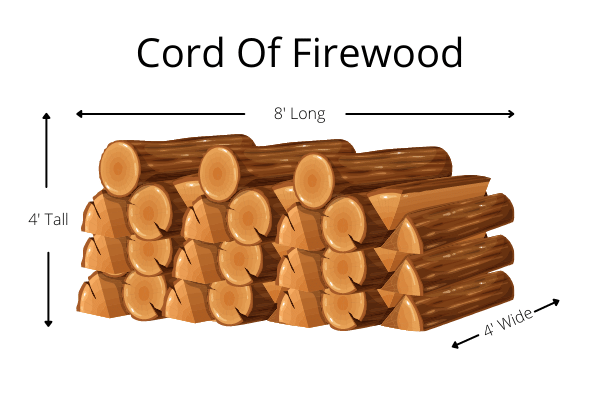
Each piece of firewood should
be uniform in length.
In the U.S. and Canada, a cord is recognized as an official unit of measurement.
It forms the basis for the legally permitted measurement for the sale of firewood.
What Is A Half Cord Of Firewood?
A half cord of firewood, one of the more common firewood measurements, is the same tightly stacked cube of wood as the cord, but a half cord of wood measures four by four by four.
As the name implies, a half cord of firewood is half the cubic space as a cord.
A half cord is 64 cubic feet whereas the cord is 128 cubic feet.
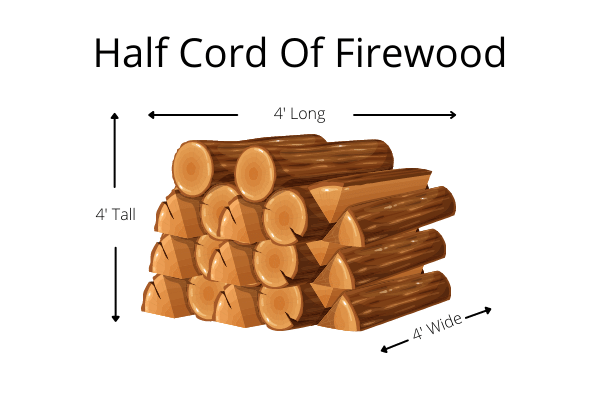
A cord and half cord of firewood are precise measurements, unlike measuring by the truckload.
For the record, a half cord of firewood can typically fit into a longer truck bed, like one that is eight-foot long.
A six-foot truck bed, on the other hand, can only accommodate
about one-third of a cord.
What Is A Cord Foot Of Firewood?
Firewood sellers in the United States don’t use the cord foot measurement very much anymore, but you may run across a cord foot from time to time.
A cord foot is 16 cubic feet of firewood, or a stack of firewood that is four feet long, four feet wide, and one foot tall.
A cord foot is one-eighth of a full cord of wood.
Measuring A Face Cord Of Firewood
A face cord is so named because it looks like a full cord from the front, or face, but lacks the required depth to be a full cord.
That means a face cord is eight feet in length and four feet in height.
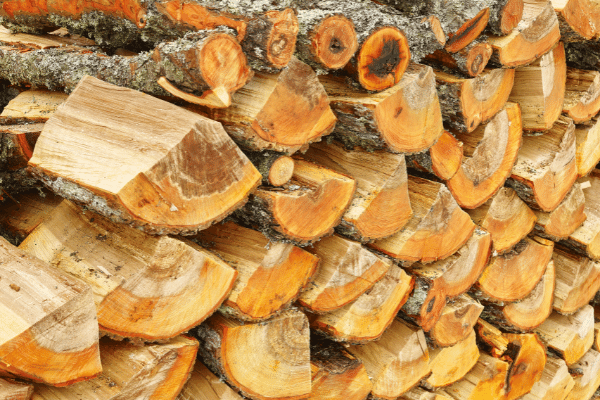
The depth, however, can vary
greatly depending upon the length of the logs.
Most often, the logs are sixteen inches long, making it one-third of a full cord, or roughly equal to a truckload … if you have a six-foot truck bed.
A face cord varies too much for it to be a standard form of measurement as recognized by the federal government.
What Is A Loose Thrown Cord Of Firewood?
The only state in the U.S. that recognizes the loose thrown cord as a form of firewood measurement is Maine.
Instead of a tightly stacked square of wood, a loose thrown cord is just that … a loose pile.
By Maine’s legal definition, a loose thrown cord is equal to 180 cubic feet if the individual pieces are cut to lengths between twelve and sixteen inches, or 195 cubic feet if the wood is twenty-four inches in length.
It may sound like a loose thrown cord contains more wood than a cord of wood, but a loose thrown cord accounts for more air space than a traditional cord.
The Legalities Of Firewood Measurements
To ensure that consumers get what they are paying for, the federal government has established legal guidelines for firewood measurements, based on the cord.
Legally, firewood can only be sold in cords, half cord of firewood, or other fractions of cords.
It is actually against the law for wood sellers to sell firewood by the truckload, or other units of measurements, like pallets, ricks, and racks.
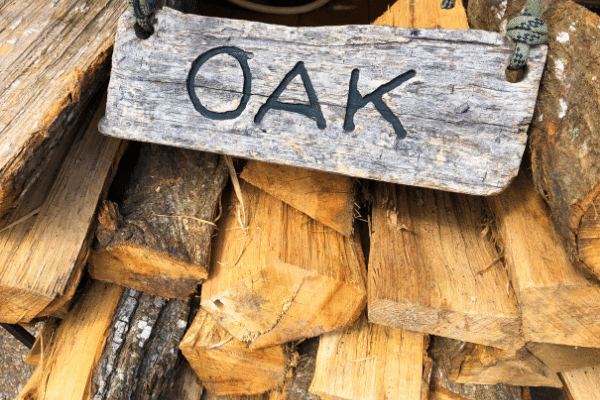
By
the way, the laws and regulations surrounding the sale of firewood extends
beyond its measurements.
It also includes other wording used to advertise firewood.
For example, if firewood is billed as seasoned, it must, by law, have a moisture content of less than 50%.
Also, if the unit of firewood is advertised as being a specific species of wood, like oak or cherry, the cord must contain more than 90% of the advertised species.
Ricks, Racks And Pallets Of Firewood
Although firewood sellers are prohibited from advertising wood sold in non-cord measurements, you may still encounter people using alternative units of measurement, such as ricks, racks, and pallets.
Just what do these mean and how do they stack up against a cord or half cord of wood?
A rick is another archaic term that comes from Old English.
Similar to a face cord, a rick is a unit of stacked firewood that is four feet tall and eight feet long, but with differing depths.
The length of the firewood can be a foot, foot and a half, or two feet long, which drastically changes the total volume of wood in the stack.
In the U.S., the term rick is more common in the Midwest.
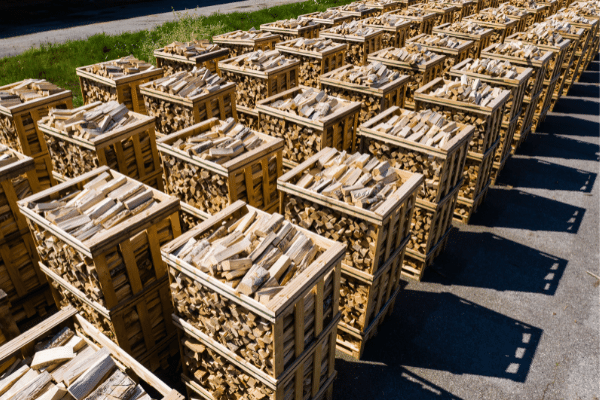
Not
to be confused with a rick is a rack.
A rack of firewood is equivalent to one-quarter of a full cord.
It measures 45 inches by 87 inches, not numbers that easily translate into feet.
It is also possible to find firewood shrink wrapped and sold on pallets.
Typically, a pallet of firewood is a three-and-a-half-foot cube.
Although this is also subject to variations, a pallet is generally about the same as one-third of a standard cord of firewood.
Buying A Half Cord Of Firewood - Considerations
When purchasing a half cord of firewood, it helps to be aware of the various units of measurement, as well as the rules and regulations governing the firewood industry.
A firewood seller who is advertising firewood sold in truckloads, ricks, or other non-cord units is not complying with federal regulations, and therefore should be handled with caution or avoided altogether.
Ask for a delivery ticket, sales invoice, or receipt that lists the exact quantity of firewood, species of wood, and additional information.
Make sure that the receipt includes the seller’s name and contact information, as well as the prices and terms of the sale.
This may seem unnecessary, but it is a way to protect your investment in quality firewood.